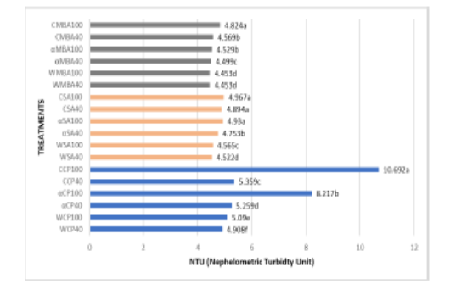


Indian Journal of Science and Technology
DOI: 10.17485/IJST/v16i20.2336
Year: 2023, Volume: 16, Issue: 20, Pages: 1487-1494
Original Article
Alvin G Domingo1*, Jayson F Cariaga2, Bjorn S Santos3, Shirley C Agrupis3
1Researcher, Graduate School, Mariano Marcos State University, Mariano Marcos State University
2Researcher, National Bioenergy Research and Innovation Center, Mariano Marcos State University
3Professor, Graduate School, Mariano Marcos State University
*Corresponding Author
Email: [email protected]
Received Date:05 December 2022, Accepted Date:08 April 2023, Published Date:20 May 2023
Objectives: The study is aimed to assess the potential of nipa frond biomass to produce cellulose hydrogel by analyzing the elemental composition, morphology, solubility, and effectivity of the isolated nipa a-cellulose (iNaC). Methods: The iNaC was produced through physico-chemical treatments and examined using a scanning electron microscope. After dissolving the cellulose, it was mixed with various chemical cross-linkers to produce cellulose hydrogels. Findings: Results showed that the iNaC had well-distributed microfibrils of cellulose arranged in parallel orthogonal layers. Solubility (%) reveals treatment 2, involving 10% NaOH pre-treatment of iNaC, yielded the ideal cellulose for eco-friendly and cost-effective cellulose solution production with high solubility percentage. Moreover, cellulose-based hydrogels were more viscous and more turbid than water-based hydrogels, increasing the integrity of the produced hydrogels. Novelty: The study demonstrates that iNaC can be transformed into a cellulose-based hydrogel through a one-step chemical crosslinking process, which can streamline the production process and reduce toxic pollution. This has important environmental benefits and potential applications in medical, agricultural, and wastewater treatment.
Keywords: Cellulose Hydrogel; Nipa Frond; Biomass; Chemical Crosslinking
© 2023 Domingo et al. This is an open-access article distributed under the terms of the Creative Commons Attribution License, which permits unrestricted use, distribution, and reproduction in any medium, provided the original author and source are credited. Published By Indian Society for Education and Environment (iSee)
Subscribe now for latest articles and news.